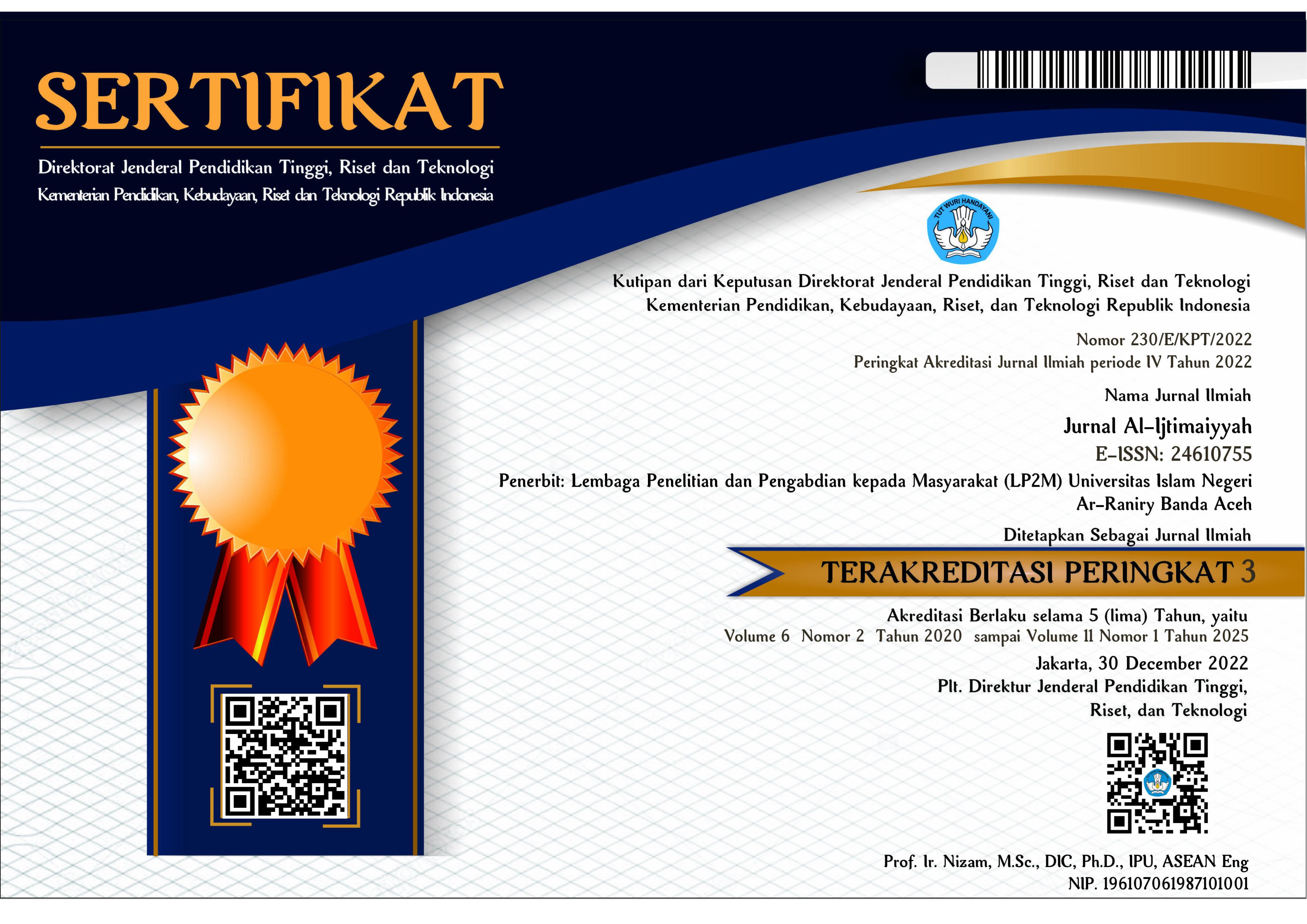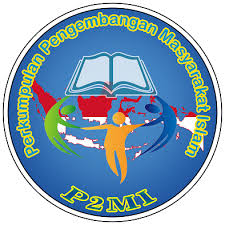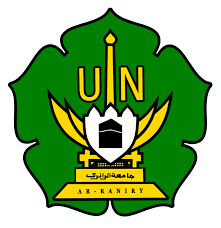SOCIETY AND SOCIAL MEDIA: PUBLIC OPINION ON THE PHENOMENON OF USTAD SOLMED AS A SYMBOL OF “RICH AND RELIGION”
DOI:
https://doi.org/10.22373/al-ijtimaiyyah.v11i1.25723Keywords:
Phenomenon, Rich and Religious, Comments, Netizens, Public OpinionAbstract
This study analyzes the "Rich and Religious" image of Ustad Solmed as either a controversy or an inspiration through netizen comments on Instagram. This research reveals the dynamics of social media as a space for the production of imagery and social symbols that influence public perception. Using a qualitative approach and sentiment analysis, the study shows that netizens, as a normative majority, highlight the importance of balancing worldly affairs and the hereafter. Ustad Solmed's image is viewed negatively by netizens due to a worldly lifestyle deemed inconsistent with his status as a preacher. In the concept of social reception, acceptance or rejection of the balance between wealth and religiosity affects public perception of material and religious success. If society accepts this balance, a new symbol will emerge in religious practice, influencing religion-based economic life.Downloads
References
Afifah, N. Z. 2019. “Encoding-Decoding Khalayak tentang Kekerasan Verbal dalam Video Gaming Reza ‘Arap’ Oktovian (Audience Encoding-Decoding on Verbal Violence in Reza ‘Arap’ Oktovian’s Video Gaming Content).” Lektur Jurnal Ilmu Komunikasi 2(2).
Agesti, S. P., Anrial, A., & Cholis, N. (2022). Etika Komunikasi Netizen Dimedia Sosial Twitter Pada Akun Twitter Ustadz Hilmi Firdausi (Doctoral dissertation, IAIN Curup).
Annas, F. B., Petranto, H. N., & Pramayoga, A. A. (2019). Opini publik dalam polarisasi politik di media sosial public opinion of political polarization on social media. Jurnal PIKOM (Penelitian Komunikasi Dan Pembangunan), 20(2), 111.
Augustinah, F., and Widayati. 2019. “Pemanfaatan Media Sosial sebagai Sarana Promosi (The Use of Social Media as a Promotional Tool).” Jurnal Dialektika 4(2): 1–20.
Baidhawy, Z. 2005. Pendidikan Agama Berwawasan Multikultural (Multicultural-Oriented Religious Education). Jakarta: Erlangga.
Choiriyati, S. 2015. “Peran Media Massa dalam Membentuk Opini Publik (The Role of Mass Media in Shaping Public Opinion).” UML 2(2): 21–27.
Farihah, I. 2015. “Filsafat Materialisme Karl Marx (Karl Marx’s Philosophy of Materialism).” Fikrah: Jurnal Ilmu Aqidah dan Studi Keilmuan 2(2).
Fauzi, M. 2023. Muslimah Bukan Agen Moral (Muslim Women Are Not Moral Agents). Yogyakarta: Bentang Pustaka.
Ginting, S. Y. 2023. “Teori-teori Psikologi Sosial dalam Konteks Perilaku Manusia (Theories of Social Psychology in the Context of Human Behavior).” Literacy Notes 1(1): 1–10.
Hall, S. 1977. The Work of Representation: Cultural Representations and Signifying Practices. London: Sage Publications.
Hayat, N. 2022. “Religion Identity and Political Polarization: How Does Labeling Make It Worst?” Polita: Journal of Socia Religion Research 7(1): 51–65.
Hjarvard, S. 2011. “The Mediatisation of Religion: Theorising Religion, Media and Social Change.” Culture and Religion 12 (2): 119–135. https://doi.org/10.1080/14755610.2011.579719.
Hosseini, S. H. 2008. “Religion and Media, Religious Media, or Media Religion: Theoretical Studies.” Journal of Media and Religion 7(1–2): 56–69. https://doi.org/10.1080/15348420701838350.
Juditha, C. 2018. “Interaksi Komunikasi Hoax di Media Sosial serta Antisipasinya (Hoax Communication Interaction in Social Media and Its Anticipation).” Jurnal Pekommas 3(1): 31–44.
Kołodziejska, Marta, Łukasz Fajfer, Dominika H., and Kerstin Radde-Antweiler. 2023. “Religious Media Settlers in Times of Deep Mediatization.” Religion 53(2): 199–223. https://doi.org/10.1080/0048721X.2022.2083032.
Mailo, F. F., and Lazuardi, L. 2019. “Analisis Sentimen Data Twitter Menggunakan Metode Text Mining Tentang Masalah Obesitas di Indonesia (Twitter Sentiment Analysis Using Text Mining on Obesity Issues in Indonesia).” Journal of Information Systems for Public Health 4(1).
Meilia, S. A., Ardana, A. F., Razzaq, A., & Nugraha, M. Y. (2024). Dakwah Ustadz Abdul Somad pada media sosial TikTok: Upaya menjaga adab dalam berkomunikasi. Komunika: Jurnal Ilmiah Komunikasi, 2(2), 9-17.
Nugroho, A. C. 2021. “Teori Utama Sosiologi Komunikasi (Fungsionalisme Struktural, Teori Konflik, Interaksi Simbolik) [Main Theories of Communication Sociology: Structural Functionalism, Conflict Theory, Symbolic Interactionism].” Majalah Semi Ilmiah Populer Komunikasi Massa 2(2).
Nurjaman, T., & Herlina, R. (2021). Personal branding Ustad Hanan Attaki di media sosial. Professional: Jurnal Komunikasi dan Administrasi Publik, 8(1), 22-29.
Puspasari, D. 2024. “Disorot soal Pamer Rumah Mewah, Ustaz Solmed Jelaskan Dalilnya (Criticized for Flaunting His Luxury Home, Ustaz Solmed Explains the Religious Basis).” Detik.com, January 10.
Ridho, A., Saniah, M., Prayudha, J., and Warsah, I. 2023. “Manipulasi Religiusitas: Analisis Kritis terhadap Fenomena Pendistorsian Nilai-Nilai Sakral Agama di Indonesia (Religiosity Manipulation: A Critical Analysis of the Distortion of Sacred Religious Values in Indonesia).” Journal for Islamic Studies 6(2): 31–48. https://doi.org/10.1051/e3sconf/202124411036.1.
Suryawati, I., & Rusadi, U. (2021). Etnografi Virtual Komodifikasi Da’Wah Ustadz Di Channel Youtube. Perspektif Komunikasi: Jurnal Ilmu Komunikasi Politik dan Komunikasi Bisnis, 5(2), 111-128.
Taruna, M. R. 2022. “Analisis Resepsi Kelas Sosial dalam Film ‘Crazy Rich Asians’ (Reception Analysis of Social Class in the Film ‘Crazy Rich Asians’).”
Downloads
Published
Issue
Section
License
Copyright (c) 2025 Fitri Meliya Sari, Hanifah Nurdin, Marini Kristina Situmeang, Sukma Ari Ragil Putri, Syifaurrahmah

This work is licensed under a Creative Commons Attribution-ShareAlike 4.0 International License.
Authors who publish in Jurnal Al-Ijtimaiyyah agree to the following terms:
- Authors retain copyright and grant the journal right of first publication with the work simultaneously licensed Attribution-ShareAlike 4.0 International (CC BY-SA 4.0) that allows others to share the work with an acknowledgment of the work's authorship and initial publication in this journal.
- Authors are able to enter into separate, additional contractual arrangements for the non-exclusive distribution of the journal's published version of the work (e.g., post it to an institutional repository or publish it in a book), with an acknowledgment of its initial publication in this journal.
- Authors are permitted and encouraged to post their work online (e.g., in institutional repositories or on their website) prior to and during the submission process, as it can lead to productive exchanges, as well as earlier and greater citation of published work. (See The Effect of Open Acces)









